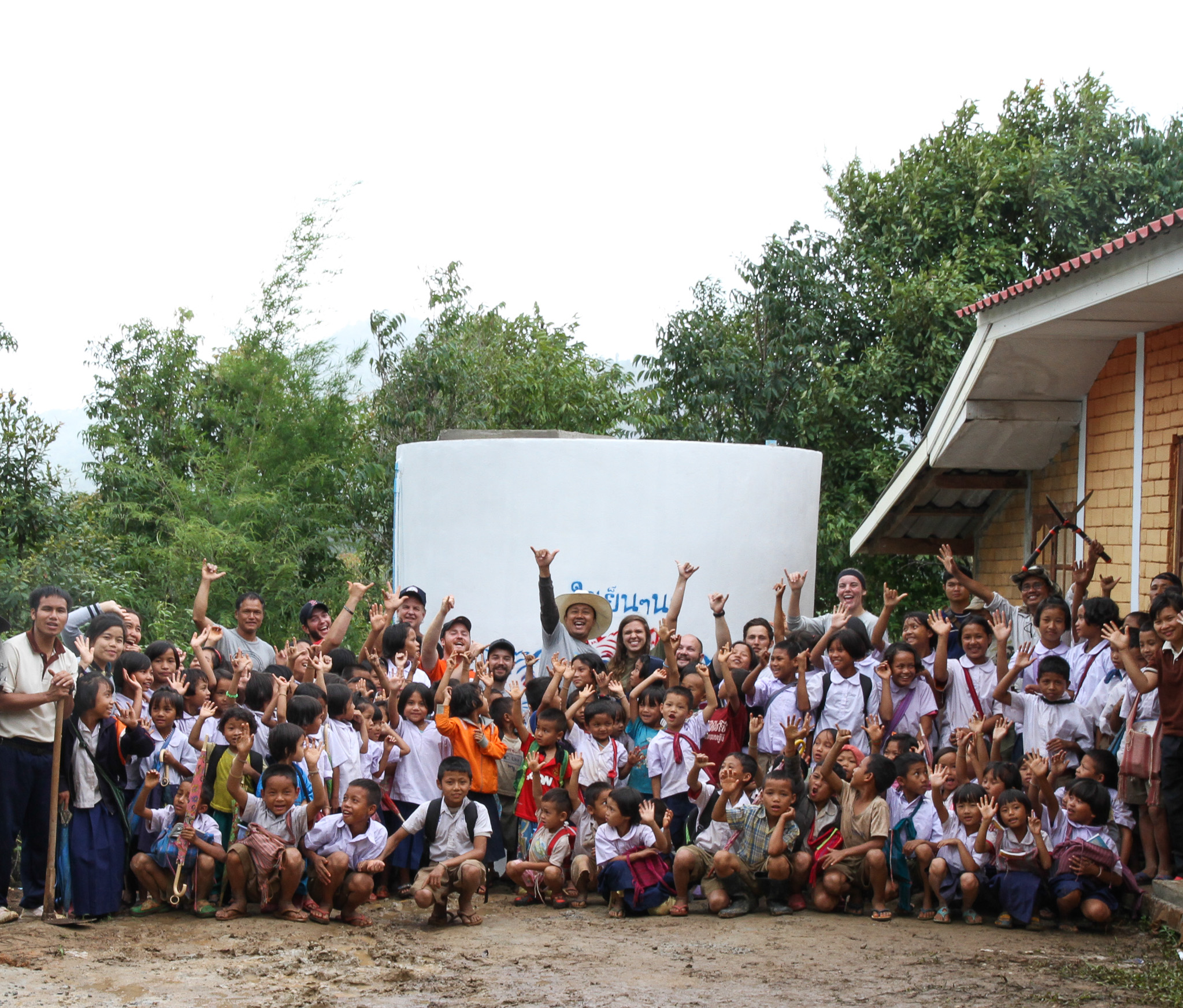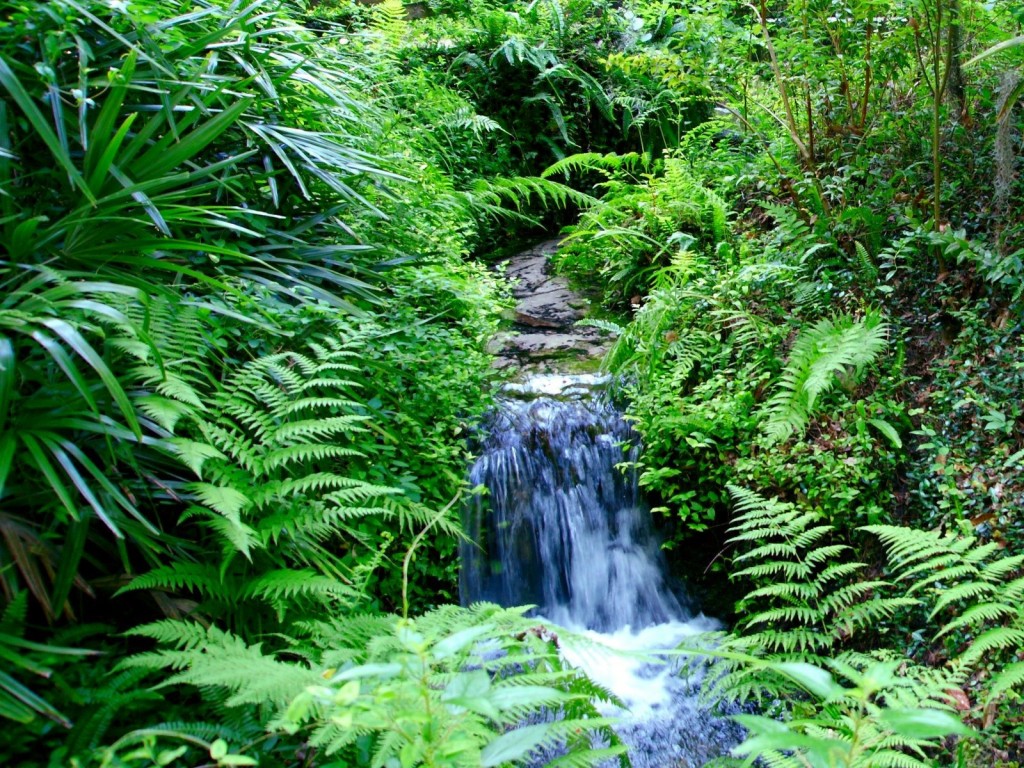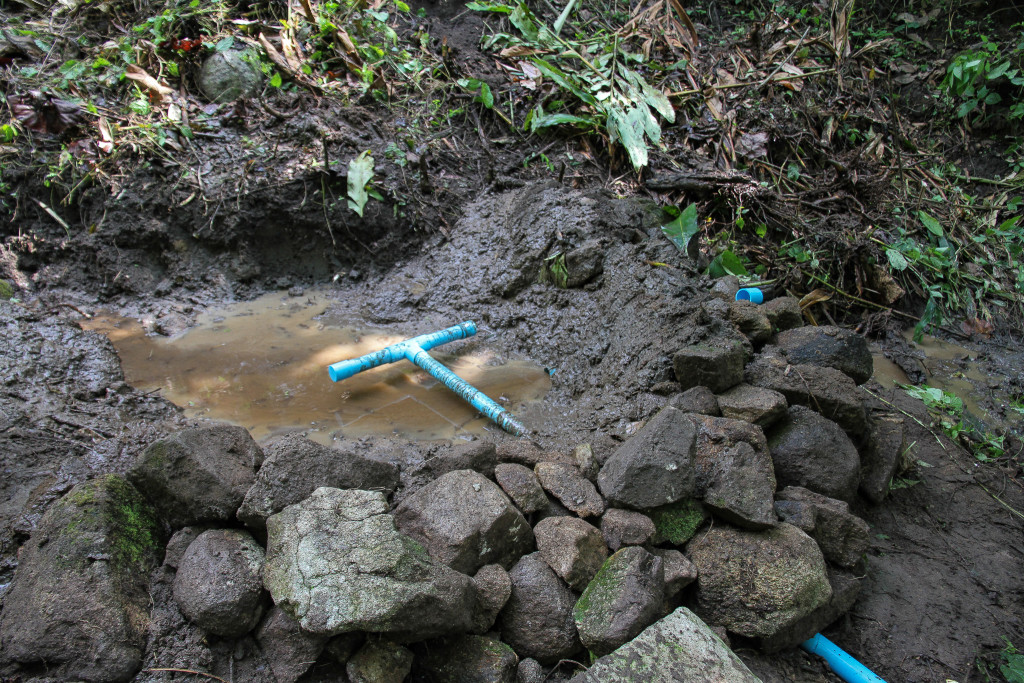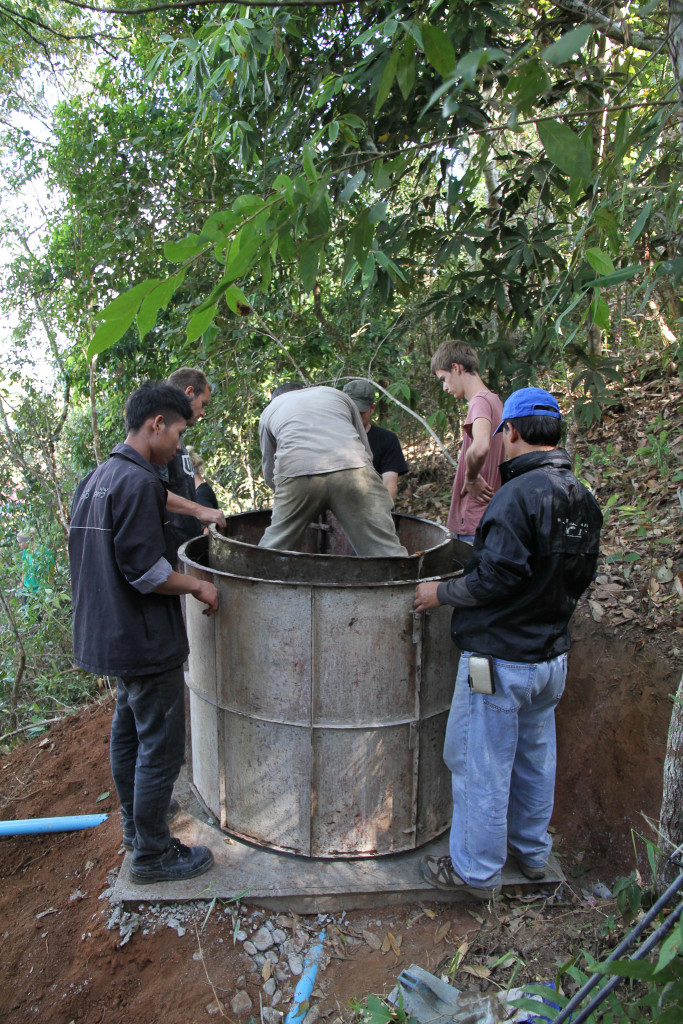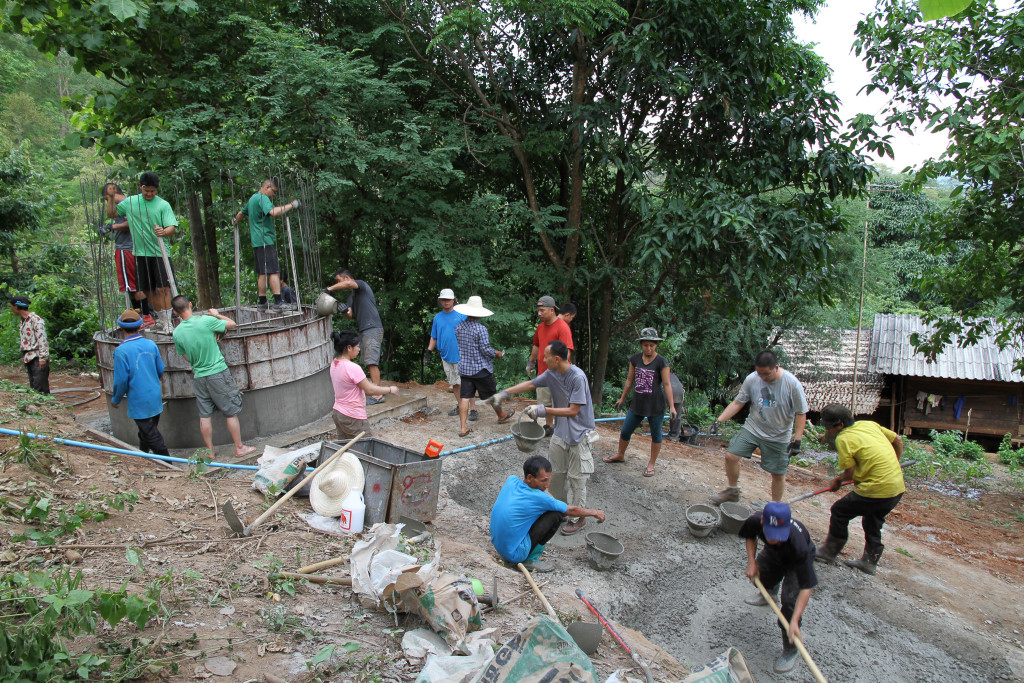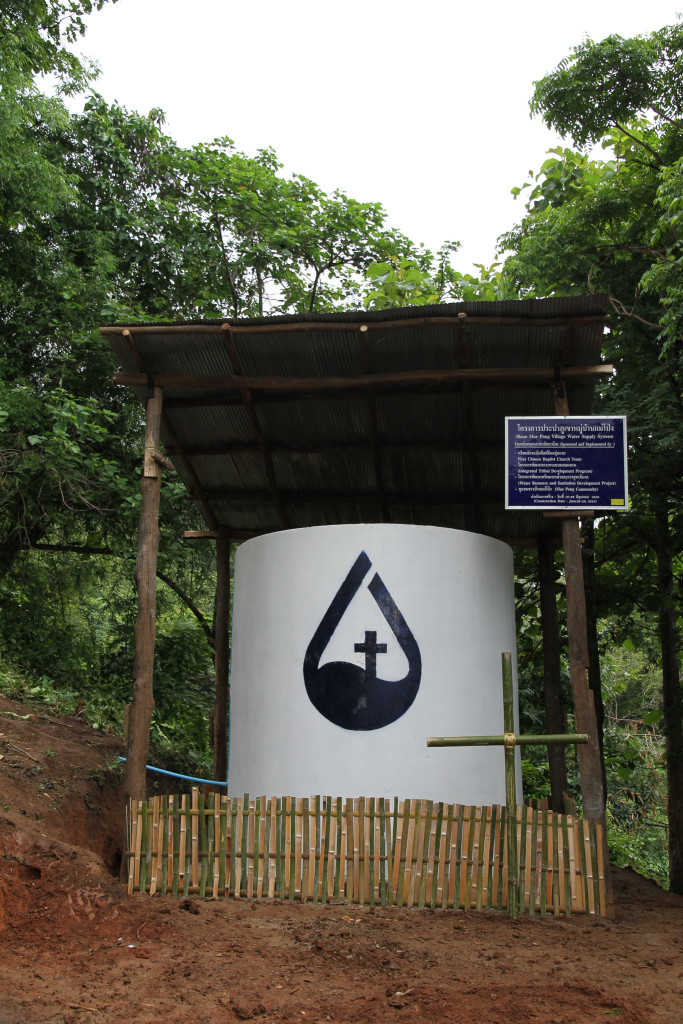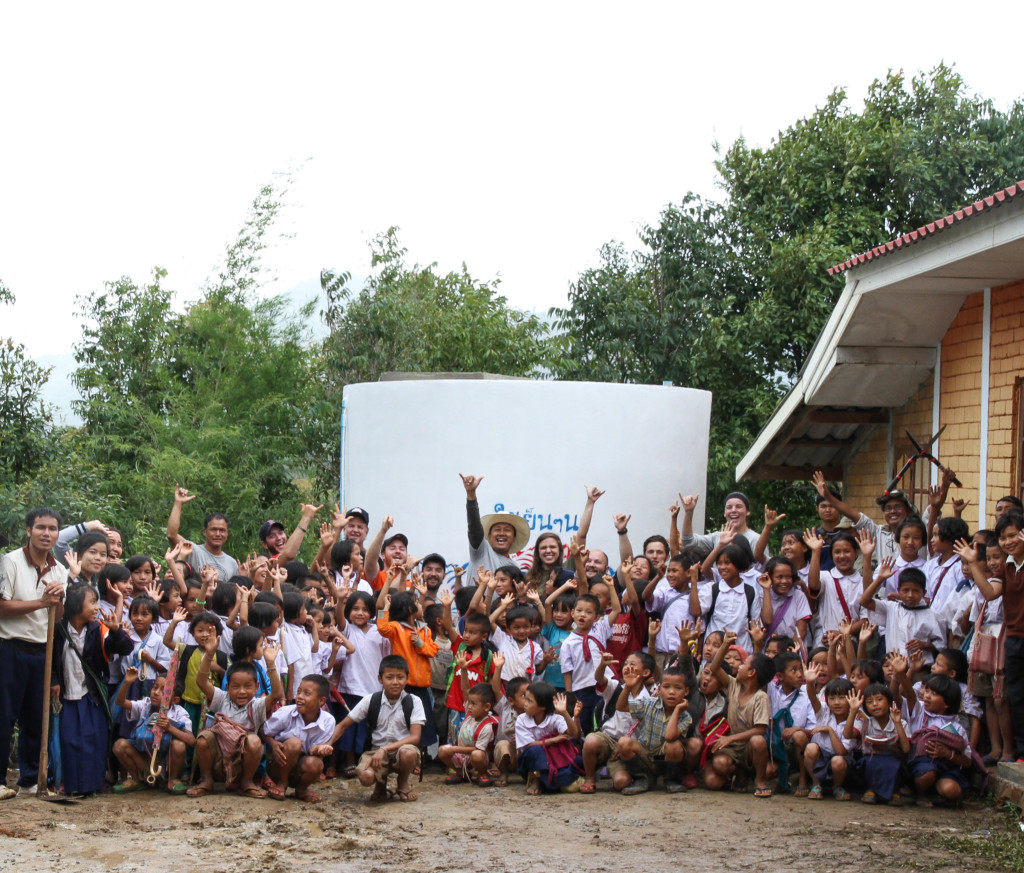ITDP started out as a single project, which focused on meeting the most basic need of hill tribe villagers in Northern Thailand.
This need was clean water…
Today, this need is still just as common.
The harsh reality: most villagers have to walk an average of 3-4 miles everyday, just to bring water back to their homes.
This water is not clean, yet, the water that they do bring back is used for everything; from washing clothes, to bathing and to drinking.
Contaminated water often leads to high infant mortality rate, as well as many waterborne diseases that come with drinking unfiltered water.
ITDP’s water project is called, “Water Resource and Sanitation Development Project” (WRSDP). It aims to meet the standards of clean water by developing a system that is both sustainable and economical.
To go into further detail, we’d like to show you how our water system is built in 6 steps!
Step 1- Finding a source
The first step in building any water system is finding a clean, viable source. The source always ranges in distance from the village, but must always be at a higher elevation than the village. Because these villages don’t have power, our systems must be gravity fed and not require any power to operate. It also must have water year round, so that no water is lost in the dry months.
Step 2- Building a small dam
When a good source is found, the next step is building a small dam to make a reservoir where the water can collect. This involves lugging a couple of 100+ pound bags of cement up to the source.
Step 3- Pipe the water to the village
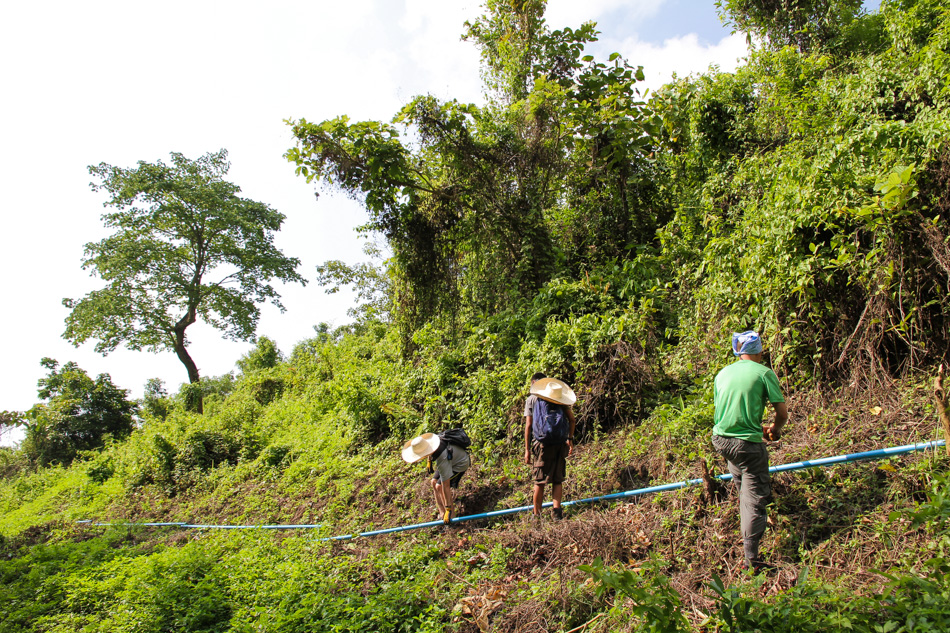 From the source, the water must be brought down to the village. A PVC pipe is laid and a trench (18”deep) is dug to bury the pipe. Digging the trench is a very important step. Opposed to laying the pipe above ground, digging the trench can add about 20 years of life to the pipe, by keeping it away from sun, wind, and rain. Depending on how far away the source is, digging the trench is usually the hardest part about building this system. Conditions can get muddy, slippery, wet, and hot! But for volunteers, it all adds to the experience of being out in nature and pushing your personal limits!
From the source, the water must be brought down to the village. A PVC pipe is laid and a trench (18”deep) is dug to bury the pipe. Digging the trench is a very important step. Opposed to laying the pipe above ground, digging the trench can add about 20 years of life to the pipe, by keeping it away from sun, wind, and rain. Depending on how far away the source is, digging the trench is usually the hardest part about building this system. Conditions can get muddy, slippery, wet, and hot! But for volunteers, it all adds to the experience of being out in nature and pushing your personal limits!
Step 4- Building a filter
Before entering the village, the water must flow through a filter to make the water drinkable. Our filter tank consists of rock, charcoal, and sand. The water enters the tank and filters through these 3 layers, drastically improving the purity of the water by the time it passes through.
Step 5- Storage
To store the water after it passes through the filter, we build a 3,900 gallon storage tank that is 3 meters tall and 2.5 meters wide. Building this tank requires many hours of hand mixing cement to pour into the forms that shape it. This step is especially important, in case there is a drought year, or if something in the system breaks and needs to be fixed.
Step 6- Lateral lines
Finally, we connect pipelines to each hut and build faucets and bathrooms.
Meeting the need
With so many people still in need of clean water, our job at ITDP and need for volunteers is never ending. With limited funding, building water systems in all of these villages is simply not an option. We have to wait for funding to come in, then pick villages based on the greatest need. Volunteer teams are a big part of building this process, because not only do they provide funding, but also much needed labour. Our volunteers are so important to these villages. Every team is tremendously and positively affecting lives!
Sustainability
Without incorporating sustainability into the mix, the project would soon be forgotten, and left to deteriorate in the jungle. To build a truly sustainable water system, there are a couple things that we do:
- Only build the system if it was requested by the village. The need needs to be there.
- The villagers pay for a very small portion to the supplies. This gives them a sense of pride and ownership, which translates into more reason to take care of it as time goes on
- One member from each family helps with the construction process
- We set up a water committee within the village, which is responsible for making sure that basic maintenance is done, ensuring the longevity of the system
Here at ITDP, it is our aim to make sure we can provide for our hill tribe villages in northern Thailand. In order to do so, we need your help. If you or members in your community are interested, we would LOVE to hear from you.
Together, we can make a difference. We can provide clean water for those in need. Thank you.
